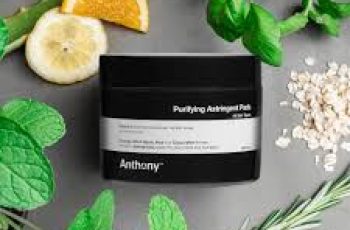
What Not to Mix with Retinol?
Maybe you’re new to skin care or want to take your routine to the next level and introduce retinol into your skin care routine. The only question is, what exactly can retinol be used with? Or more importantly, what shouldn’t be mixed with retinol? Don’t worry, in today’s blog, I’m going to show you how to use this popular skin care ingredient and tell you what not to mix it with!
What Can Retinol Be Combined With?
I know, there seem to be a lot of dos and don’ts when it comes to retinol. Understandably, you want to use it effectively since it’s one of the most effective ingredients without having to worry about skin irritation or allergic reactions. The best ingredients to combine with retinol are peptides and hyaluronic acid. Here’s why:
Retinol and Peptides
When you use a peptide-rich product, you’re creating a powerful combination of ingredients that improve skin firmness and boost collagen production. Signs of premature aging like fine lines and wrinkles are significantly reduced, and you’ll get a radiant complexion thanks to retinol’s exfoliating properties. The advantage of combining peptides with powerful vitamin A is that there is a reduced risk of skin irritation, as they contain many emollients that keep the skin hydrated and moisturized. The best way to use these ingredients for the best results is to first apply a serum containing retinol, followed by a peptide-rich moisturizer. This is ideal for an evening routine, as exposure to UV rays renders the retinol ineffective and has no effect on the skin.
Retinol and Hyaluronic Acid
Similar to using peptides for their moisturizing benefits, hyaluronic acid is also great for moisturizing the surface of the skin. Hyaluronic acid is a hydrating ingredient, which means it can draw moisture from other product formulations around the facial area and on the skin. With this ability to bind moisture in the skin, you can avoid signs of dryness. A good way to ensure you get the benefits of both is to apply hyaluronic acid first, as this helps the retinol penetrate into the underlying layers without having to fight the barrier of dry skin or dead cells.
As you can probably tell from the previous suggestions, combining hydrating ingredients with retinol is the best way to fight dry or flaky skin patches, while using retinol in your daily skin application will reap the anti-aging and anti-blemish benefits.
Can Niacinamide and Retinol be mixed?
You can actually use Niacinamide and Retinol together. Like the ingredients I mentioned before, you’ll find that Niacinamide brings some impressive hydrating properties to the skin. The fact that you can mix the two ingredients in one product formula makes it easier and more convenient for the Retinol to work its magic while the Niacinamide keeps the skin happy. If you use the two ingredients in separate products, I recommend using the Niacinamide first and then the Retinol to protect the skin from the effects of the Retinol. If you want to know more about using Niacinamide and Retinol together, you can read our dedicated blog post to clarify all your questions.
Should Vitamin C be used before or after Retinol?
Generally speaking, it’s best to avoid using Vitamin C and Retinol together in the same product or with little time between applications. Personally, I think the glow you get from applying Vitamin C at night before bed shouldn’t be wasted, but rather applied in the morning for a brightened complexion. You can then use the Retinol in your evening skincare routine. Not only does this allow your skin to have enough time between applications, but the retinol can also work undisturbed while you get your beauty sleep.
If you want to use Vitamin C at night, apply it first and then wait about 10 minutes for it to absorb into the skin. This will balance the pH and prevent unnecessary skin irritation after using retinol. An important point I want to mention is that both ingredients increase the skin’s overall sensitivity to UV radiation. Therefore, unconditional use of an SPF every day is essential to protect the skin from harmful sun damage.
Which moisturizer should I use with retinol?
This really depends on your skin type. For those who often breakouts and acne, you will get the best results by combining a lightweight, gel-based moisturizer with hyaluronic acid, glycerin, and other non-comedogenic ingredients that won’t clog pores but still fight the dryness that comes with using retinol. For dry skin types, you can use a moisturizer that is thicker in consistency and contains nourishing plant oils and butters, such as shea butter, which dry skin loves.
When using retinol and moisturizer together, it’s good to keep in mind the best routine to follow when using these products. If you’re using retinol in serum form, you’ll need to apply it before your moisturizer, as its thinner consistency makes it difficult to penetrate the thicker formula of your moisturizer. If you’re using retinol in oil form, you can apply it before or after your moisturizer, depending on how you typically use your skincare.
How Often Should You Use Retinol?
Introducing retinol into your daily routine takes time, and it shouldn’t be rushed, no matter how excited you are about the effects on your skin. To avoid severe dryness or irritation of your skin, retinol should be used once or twice a week initially. Then, as your skin develops a tolerance to the potent retinoids, you can increase it to every other day or up to three times a week. If you use retinol at night, it works effectively even when there’s no UV radiation. Don’t forget we have a detailed blog post about retinol and how to incorporate it into your daily routine.So if you still have any questions about using it in your daily life, be sure to read it.
So I hope you now feel more confident about what you should and shouldn’t use with retinol. I know sometimes you can feel like a mad scientist mixing these ingredients and products together, but once you get the hang of it, your skin will see real dramatic improvements!


